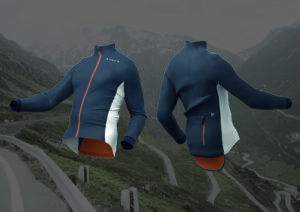In a world driven by trends and instant gratification, the fashion and activewear industry has witnessed a conflict between Fast Fashion and Slow Fashion. This divide is particularly pronounced in the realm of sportswear. Both approaches have a stark contrast in terms of their production methods, sustainability practices/systems, consumer habits and outlook for the overall future impact on the environment.
In this exploration, I will dive into the world of Fast Sportswear and Slow Sportswear, dissecting their differences, their sustainability practices, and the ongoing quest for a more sustainable future.
Fast Fashion, characterised by rapid production cycles and low-cost, trendy garments, has become synonymous with disposable fashion. The sportswear sector is no exception, as brands such as Adidas, Nike and Under armour scramble to meet a vicious cycle of the ever-changing demands of consumers looking for the latest styles in activewear. The emphasis is on quick turnaround times, enabling brands to bring new designs from the runway to the retail shelves at lightning speed. The constant release of new collections encourages a culture of disposability, where athletes and sportswear enthusiasts are enticed to upgrade their gear frequently to keep up with the trends. This in turn, contributes to massive cycles of waste. According to the ethical consumer, approximately 92 million tonnes of textiles waste is produced every year in the UK. By the end of this decade, fast fashion waste is predicated to soar up to 134 million tonnes.

However, one of the key advantages of Fast Sportswear is its emphasis on performance-driven innovation. Technological advancements in fabrics, designs, and manufacturing processes are rapidly integrated into products to meet the demands of athletes seeking the latest in sportswear functionality. However, this pursuit of innovation often comes at the cost of sustainability, as the fast-paced production cycles prioritise speed over environmental considerations.
To address the demand for activewear without compromising sustainability, Slow Fashion emerges as a viable alternative.
Slow Fashion stands in stark contrast to the rapid pace of its counterpart. It emphasises quality over quantity, encouraging consumers to invest in timeless pieces that are ethically produced and environmentally friendly. In the context of sportswear. Slow Fashion challenges the notion of disposable activewear by promoting durable, high-quality garments that transcend fleeting trends.
One of the fundamental principles of Slow Sportswear is the use of sustainable materials. Brands such as Patagonia, who prioritise organic cotton, recycled polyester, and other eco-friendly fabrics in their production processes. By opting for materials that minimise environmental impact, Slow Sportswear seeks to address the challenges posed by the fast fashion industry.
Durability is another cornerstone of Slow Sportswear. Rather than succumbing to the pressures of trend-driven design, slow fashion brands focus on creating timeless, versatile pieces that withstand the test of time. This not only promotes a shift away from the throwaway culture promoted by Fast Sportswear, but it also encourages consumers to invest in high-quality garments that last through numerous workouts and adventures.
The production practices of Slow Sportswear also prioritise transparency and ethical considerations. Many slow fashion brands engage in fair labour practices, ensuring that workers throughout the supply chain are treated ethically and paid fair wages. This commitment to social responsibility extends to the entire lifecycle of the product, from sourcing materials to end-of-life disposal.
While the slow fashion movement in sportswear aligns with sustainability goals, it is not without its challenges. One significant obstacle is the perception of higher prices associated with slow fashion products. Consumers accustomed to the affordability of fast fashion may be hesitant to invest in more expensive, sustainable alternatives.
Furthermore, educating consumers about the long-term benefits of slow fashion and the true cost of fast fashion is a crucial step in overcoming this hurdle. Brands can leverage transparency in their communication strategies, detailing their commitment to ethical practices, environmental responsibility, and the durability of their products. These brands have the responsibility to mould and encourage consumers to buy into a slow fashion approach for a better future.
Arguably, consumers can champion brands that prioritise both style and environmental responsibility. Supporting sustainable fast sportswear initiatives sends a powerful message to the industry, encouraging more brands to adopt ethical and environmentally friendly practices. Additionally, raising awareness about the environmental and social consequences of fast fashion within our communities can inspire others to make conscious choices, fostering a collective commitment to a healthier, more sustainable future for both consumers and the planet.
In recent years, there has been a growing recognition within the sportswear industry that a hybrid approach may be the key to achieving sustainability without sacrificing speed and accessibility. Some leading brands are exploring ways to integrate slow fashion principles into their fast fashion models, striking a balance between timely trend responses and long-lasting, environmentally conscious products.
This hybrid model involves incorporating sustainable materials, reducing waste in production, and adopting circular economy principles. It also includes initiatives such as take-back programs, where consumers can return old sportswear items for recycling or repurposing. By blending elements of both fast and slow fashion, brands can work towards a more sustainable future while still meeting strenuous demands of the dynamic sportswear and activewear market.
In the ever-evolving landscape of sportswear, the tension between Fast Fashion and Slow Fashion persists. By making informed choices, individuals can contribute to a shift towards more sustainable, ethical practices in the world of activewear. Slow fashion, with its focus on durability, ethical practices, and eco-friendly materials, is gaining traction as a viable solution.
The future of sportswear lies in a careful balance between meeting consumer demands for trendy, affordable activewear and addressing the urgent need for sustainable practices. Brands that successfully navigate this delicate balance will not only thrive in the competitive market but will also contribute to a more environmentally conscious and socially responsible industry.
To create a paradigm, shift within the sportswear/activewear fast and slow fashion industry, all three factors need to work cohesively in order to achieve a sustainable future for the industry, consumers themselves, and, most importantly the planet!
If you are looking to produce sustainable sportswear, then please get in touch now and let’s have a chat.
By Nadine – BAS Sportwear Designer/Developer.




